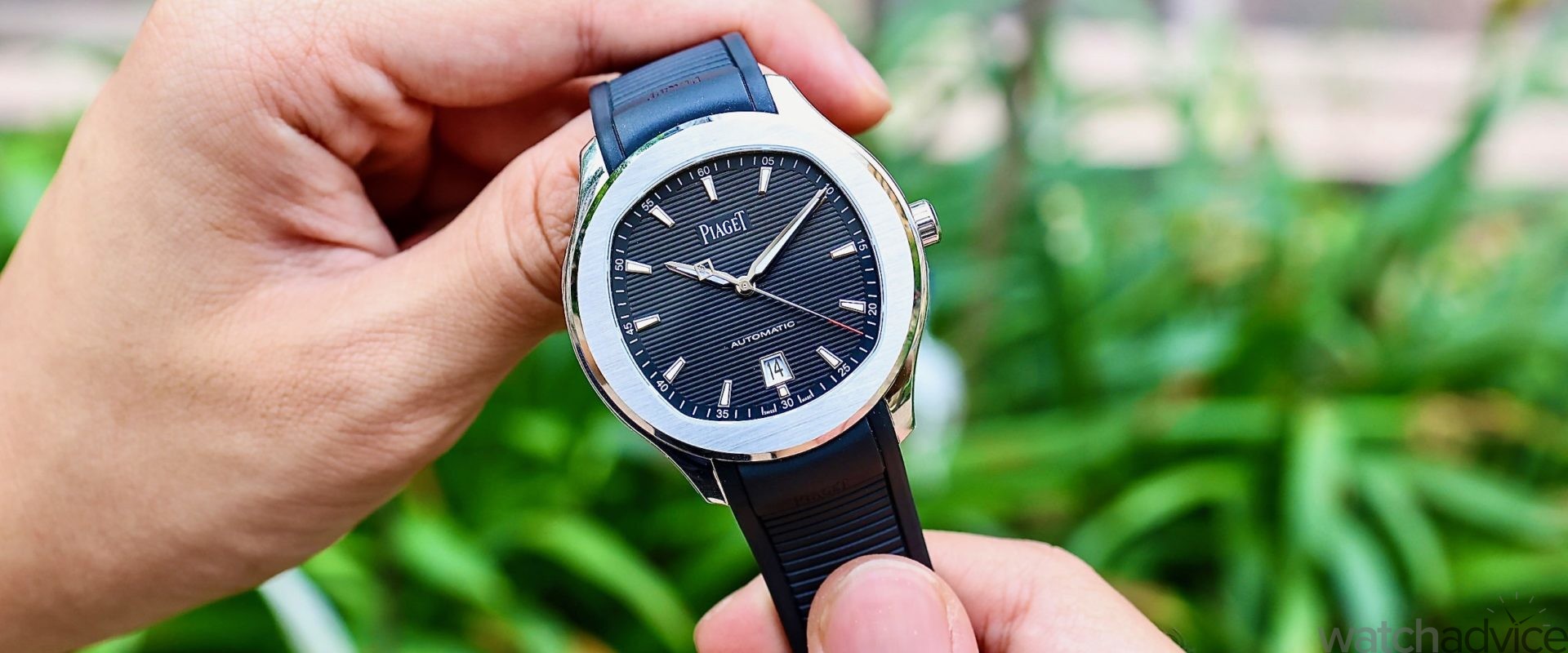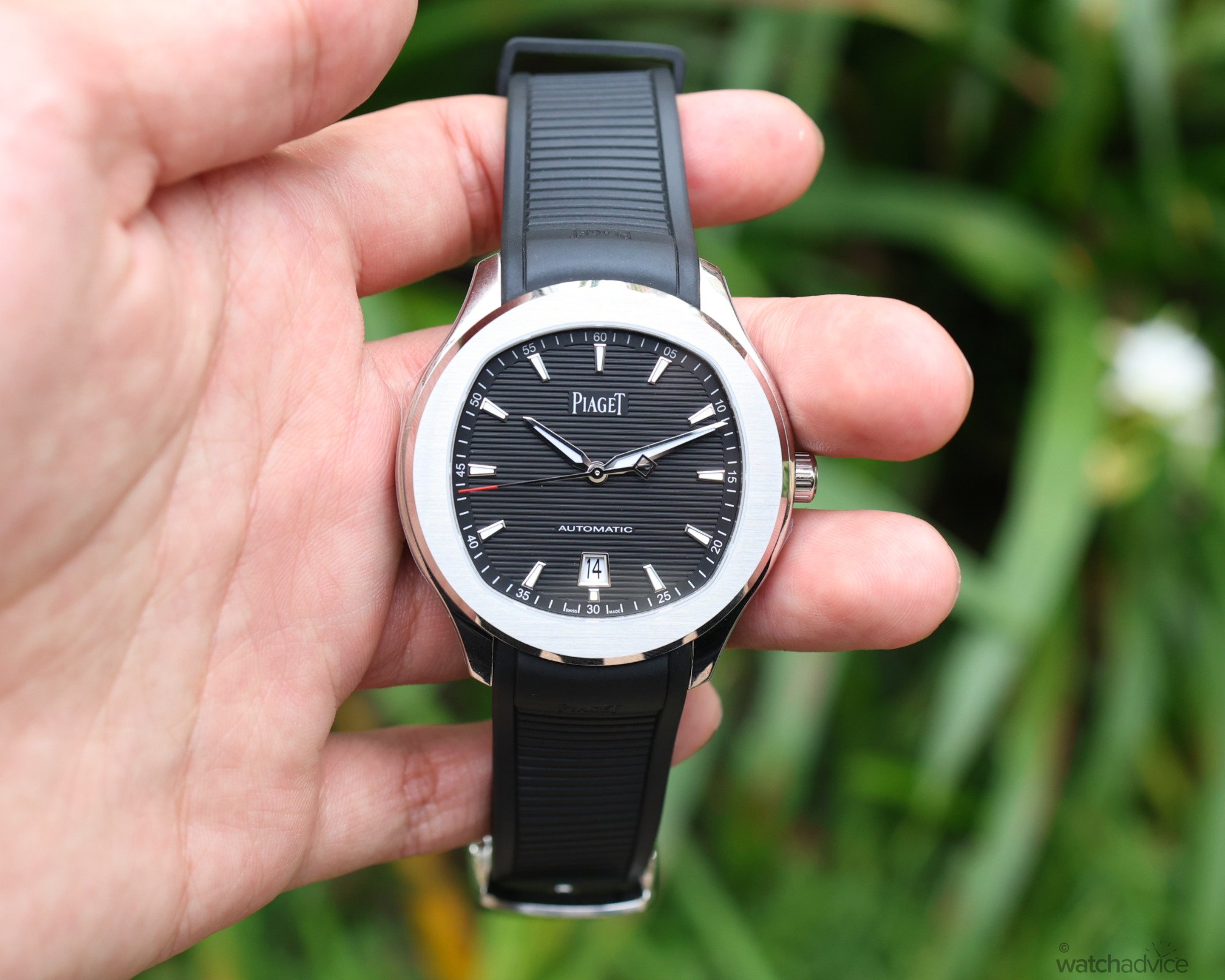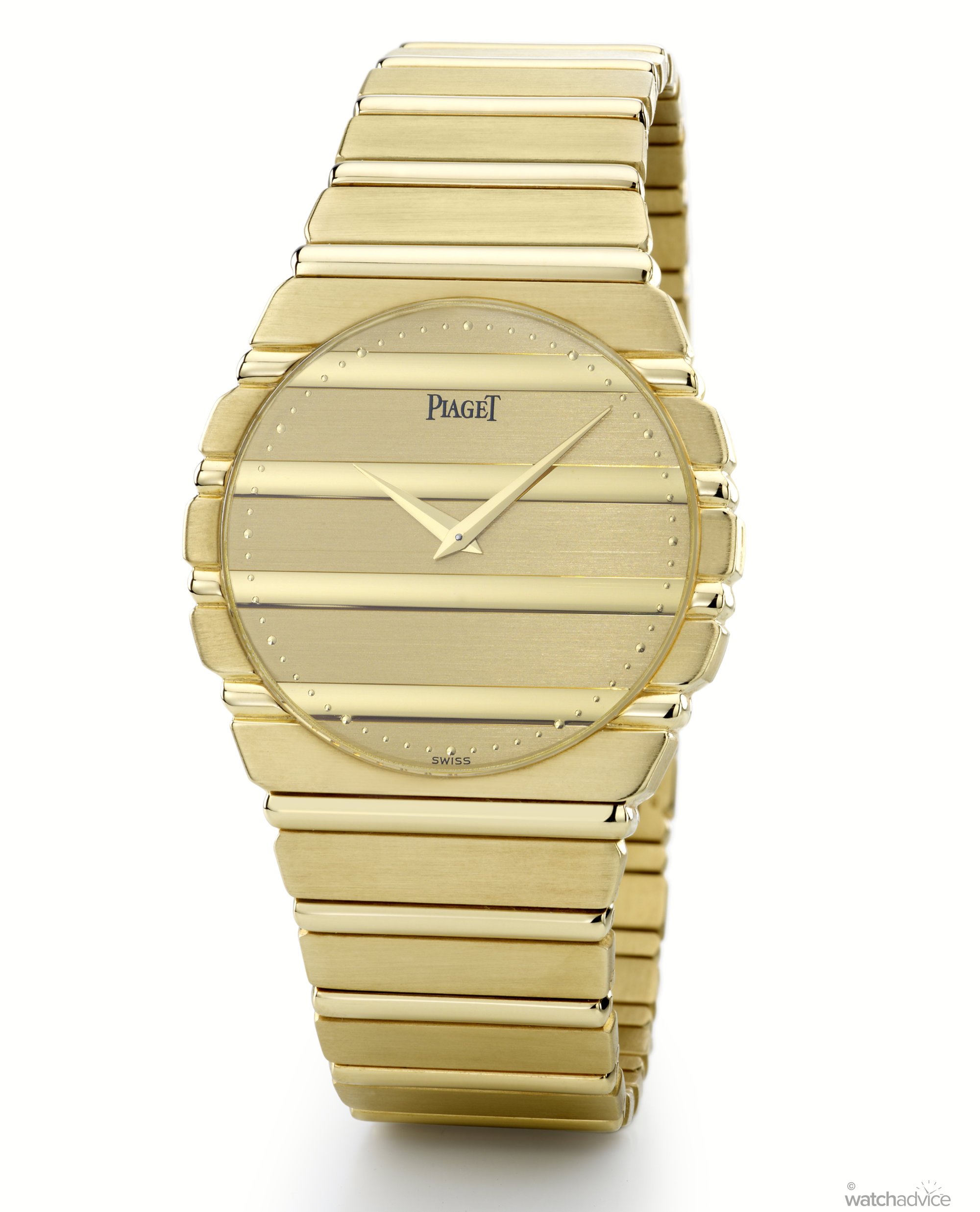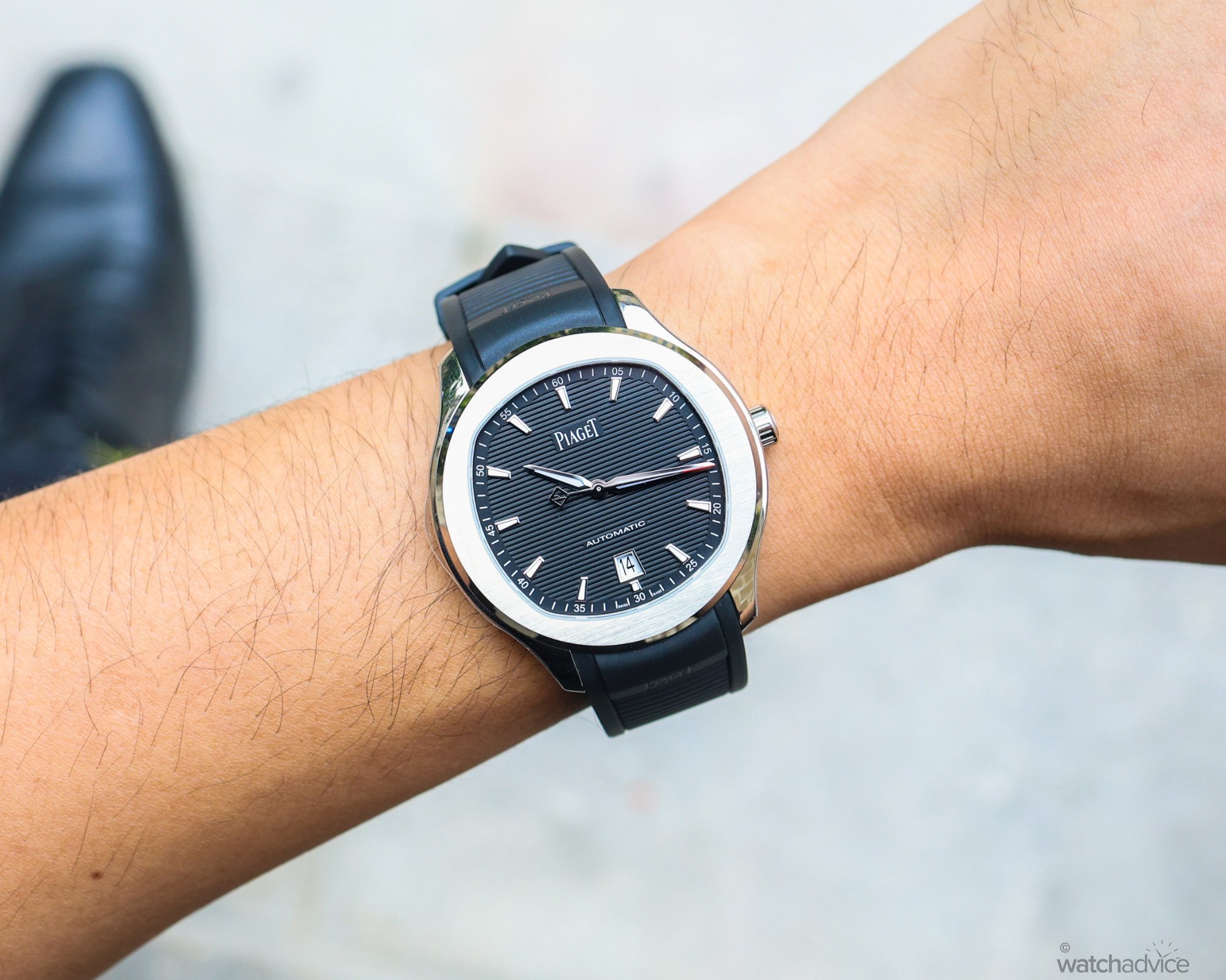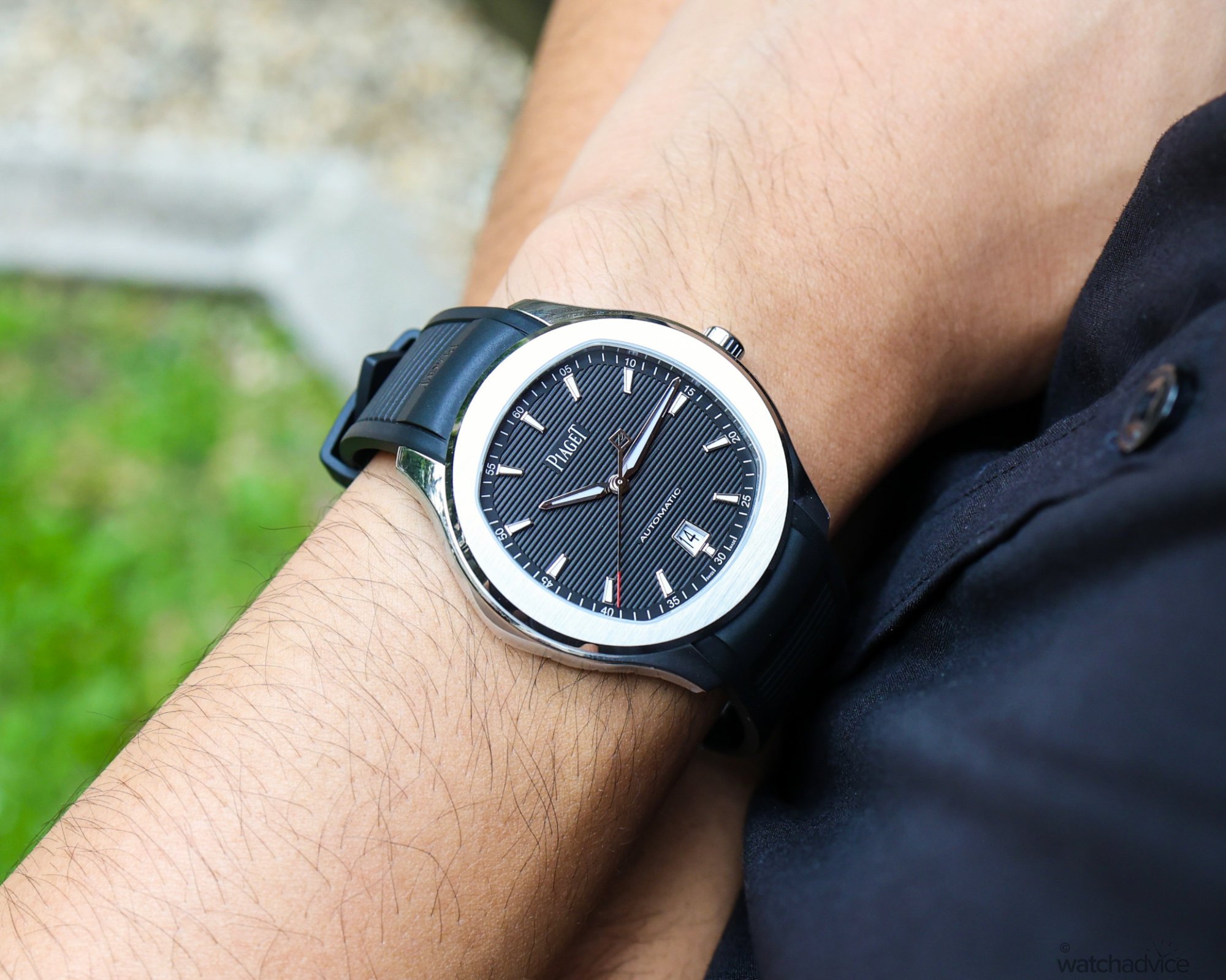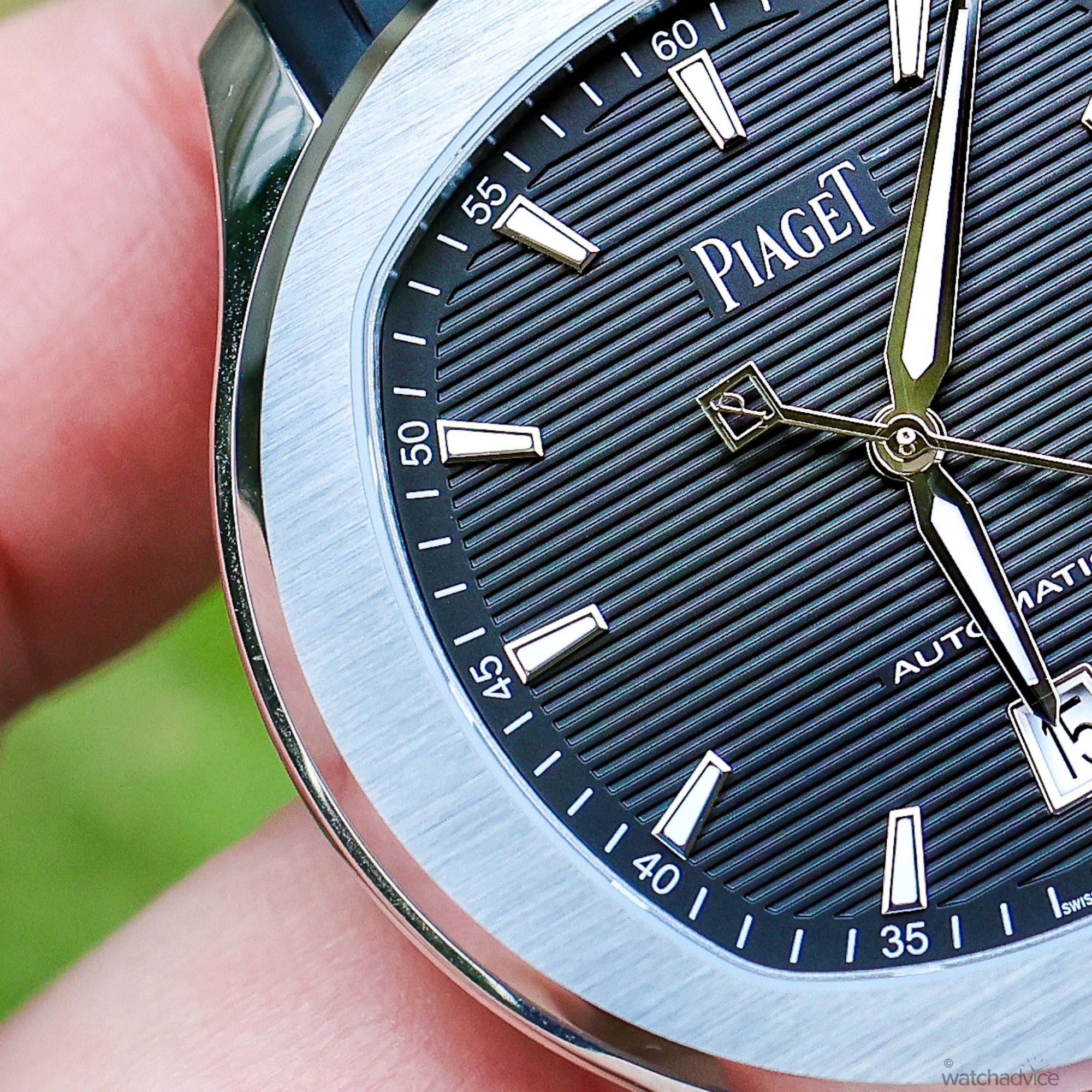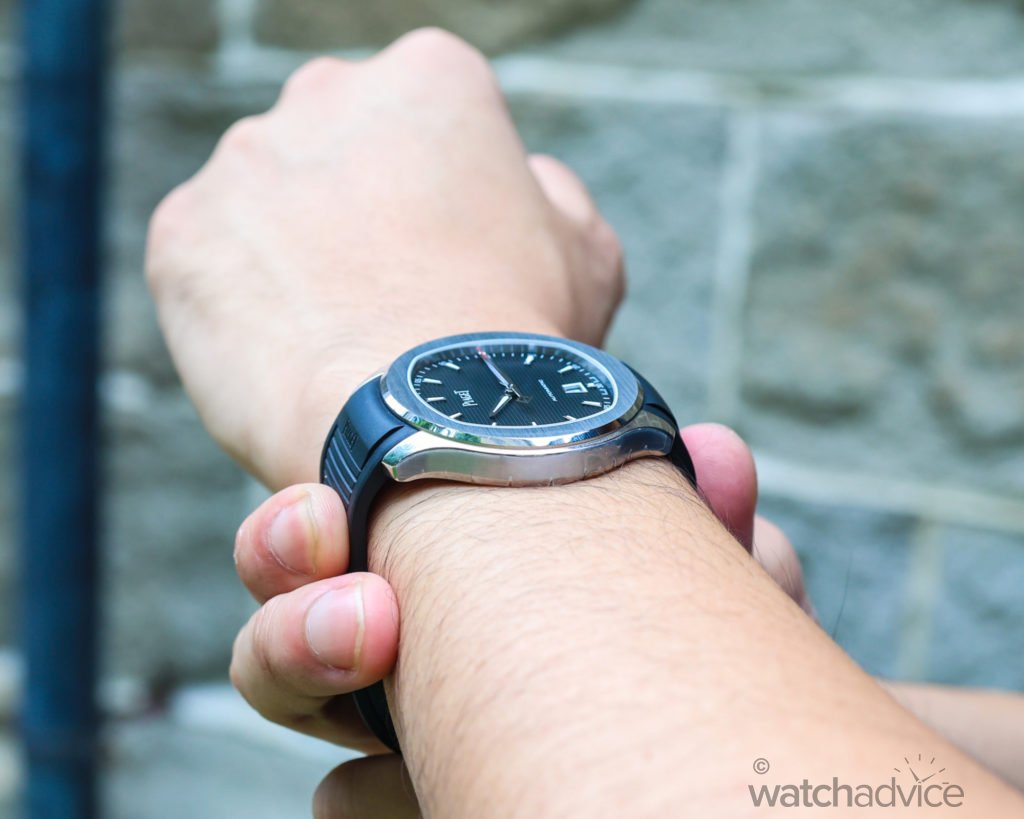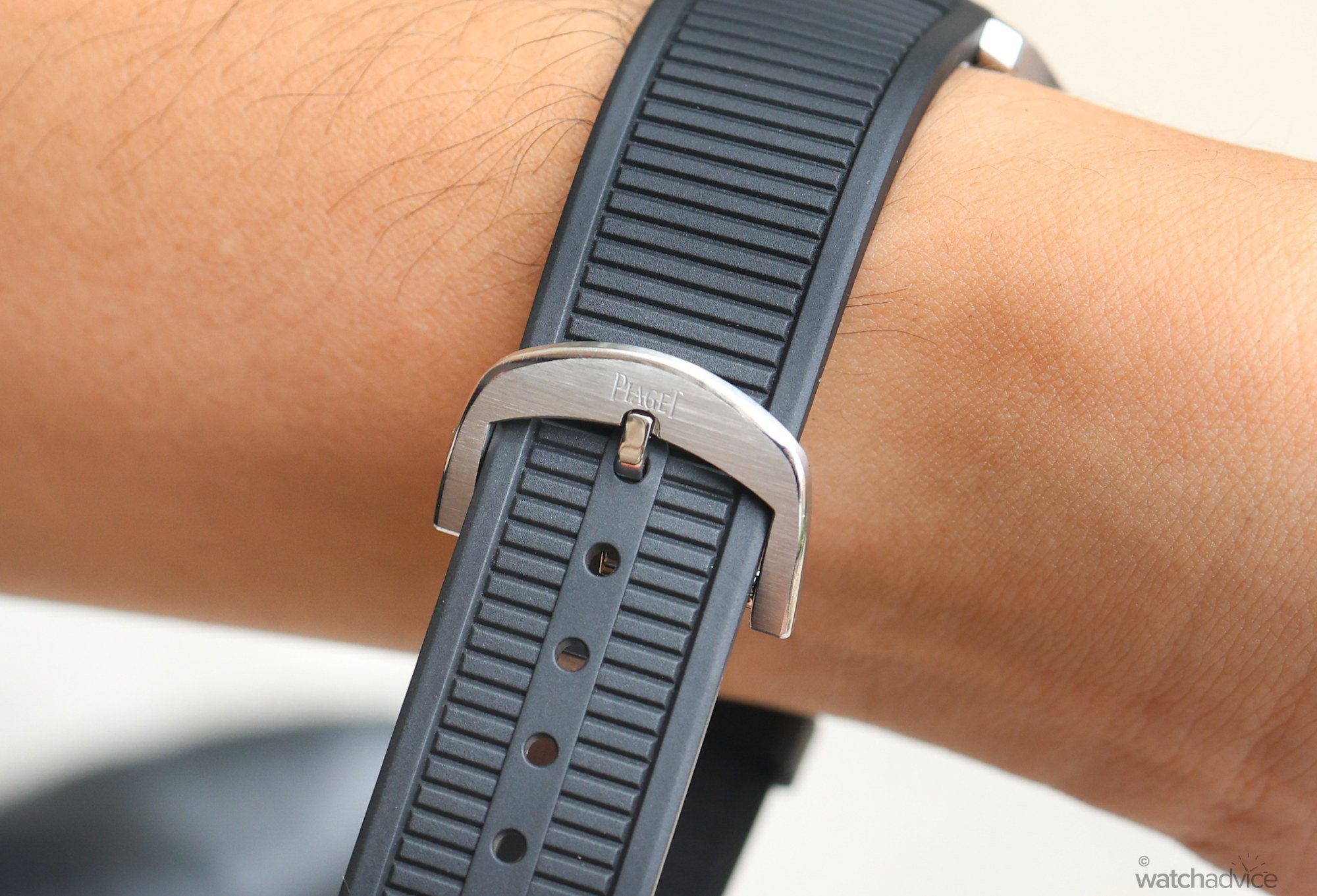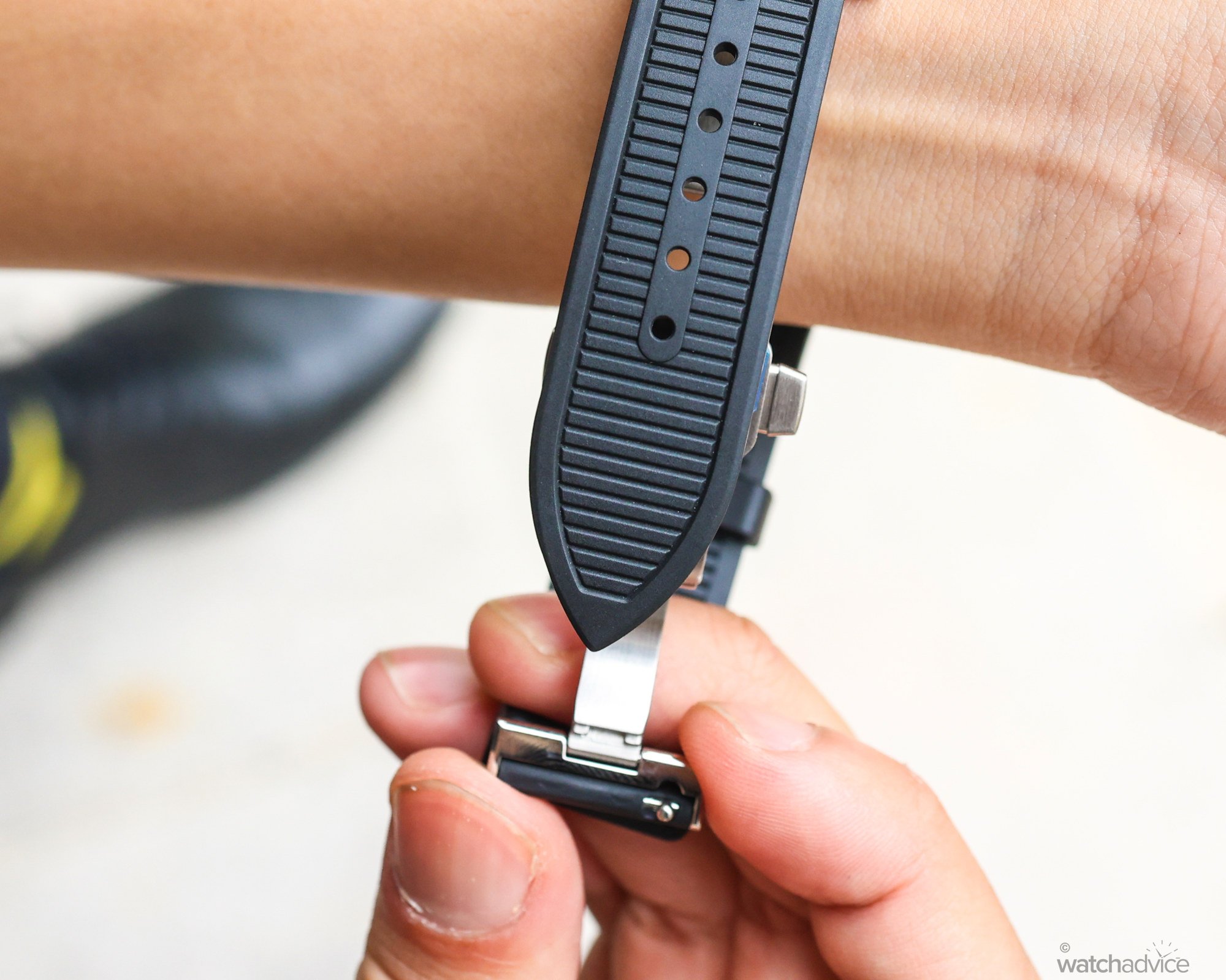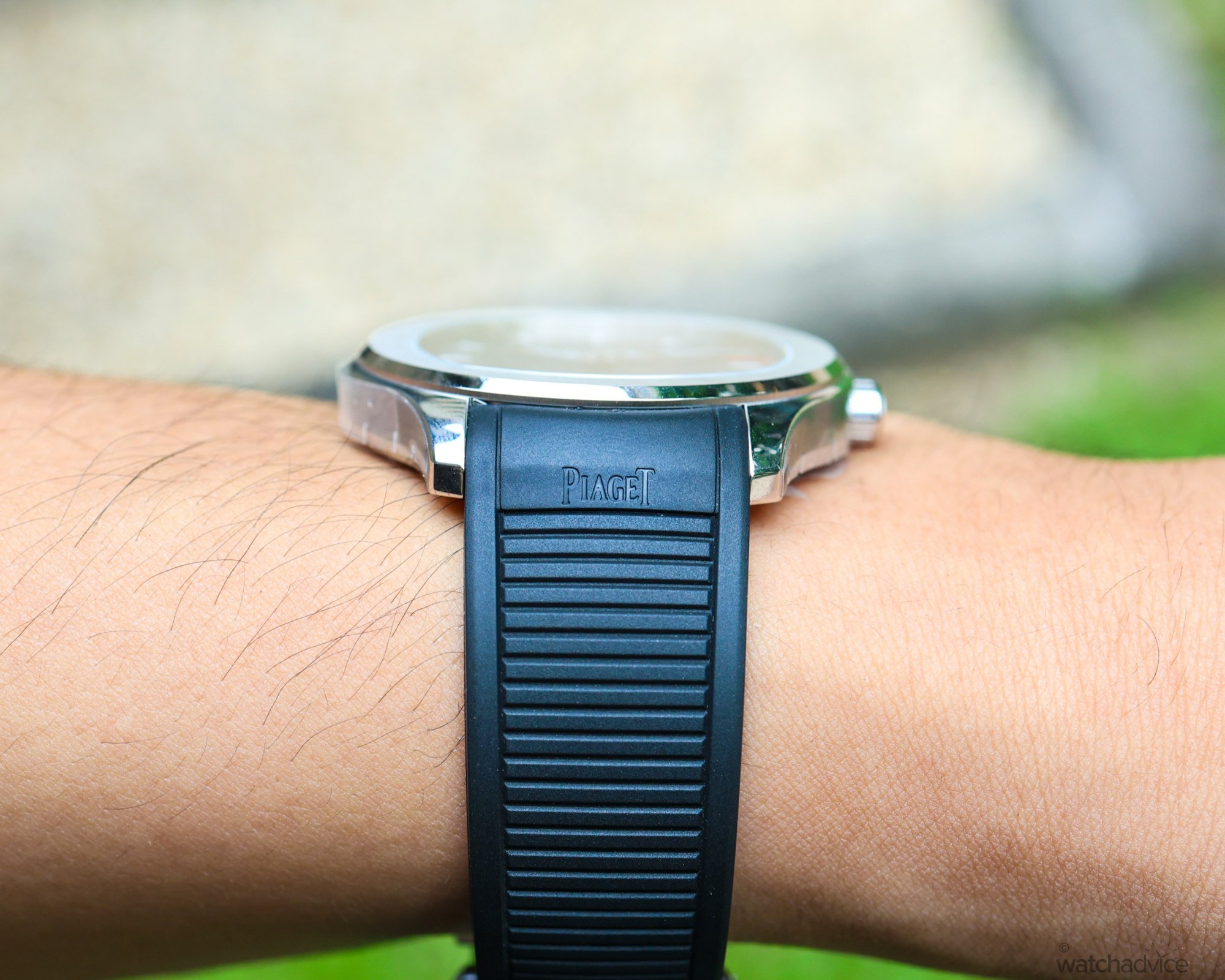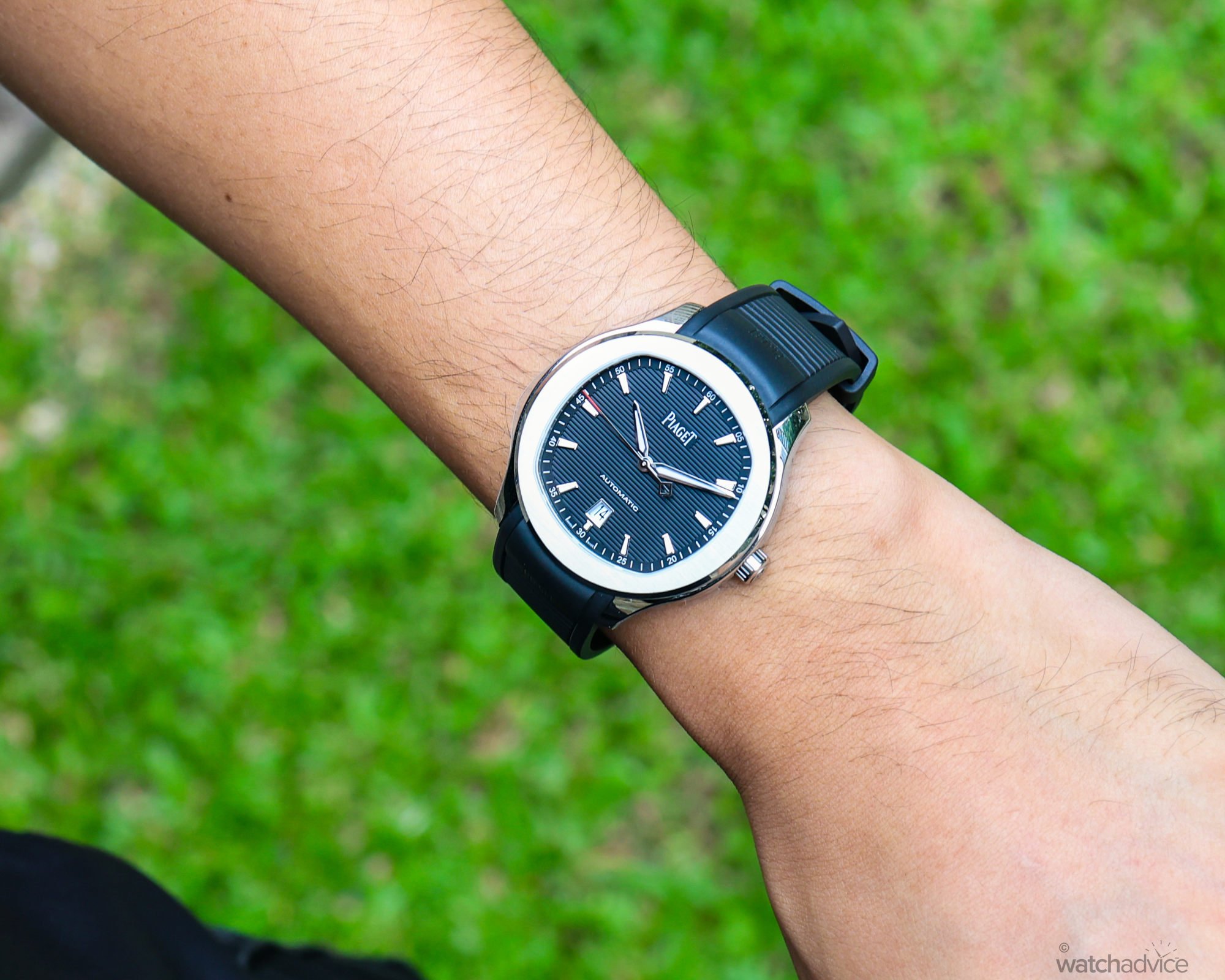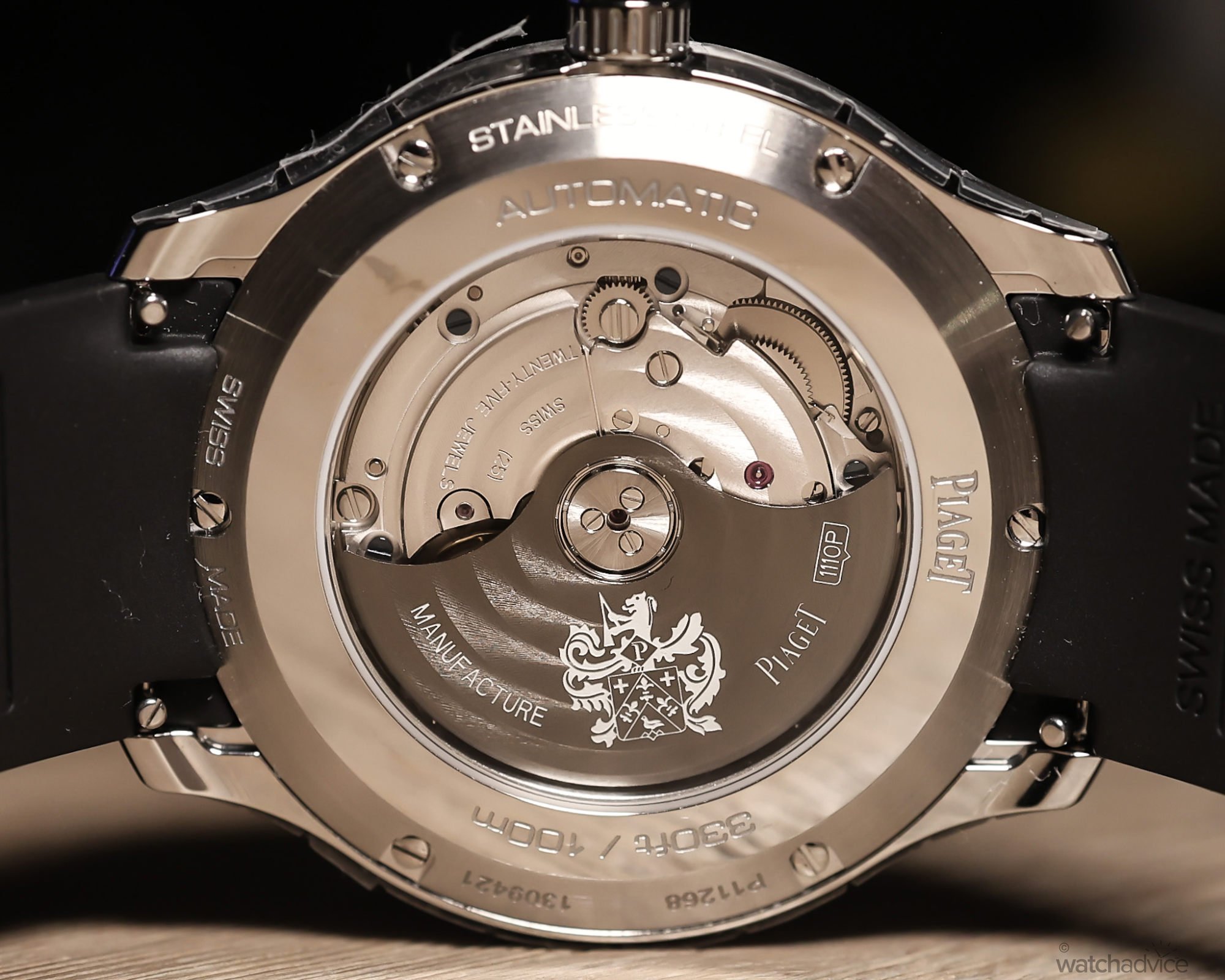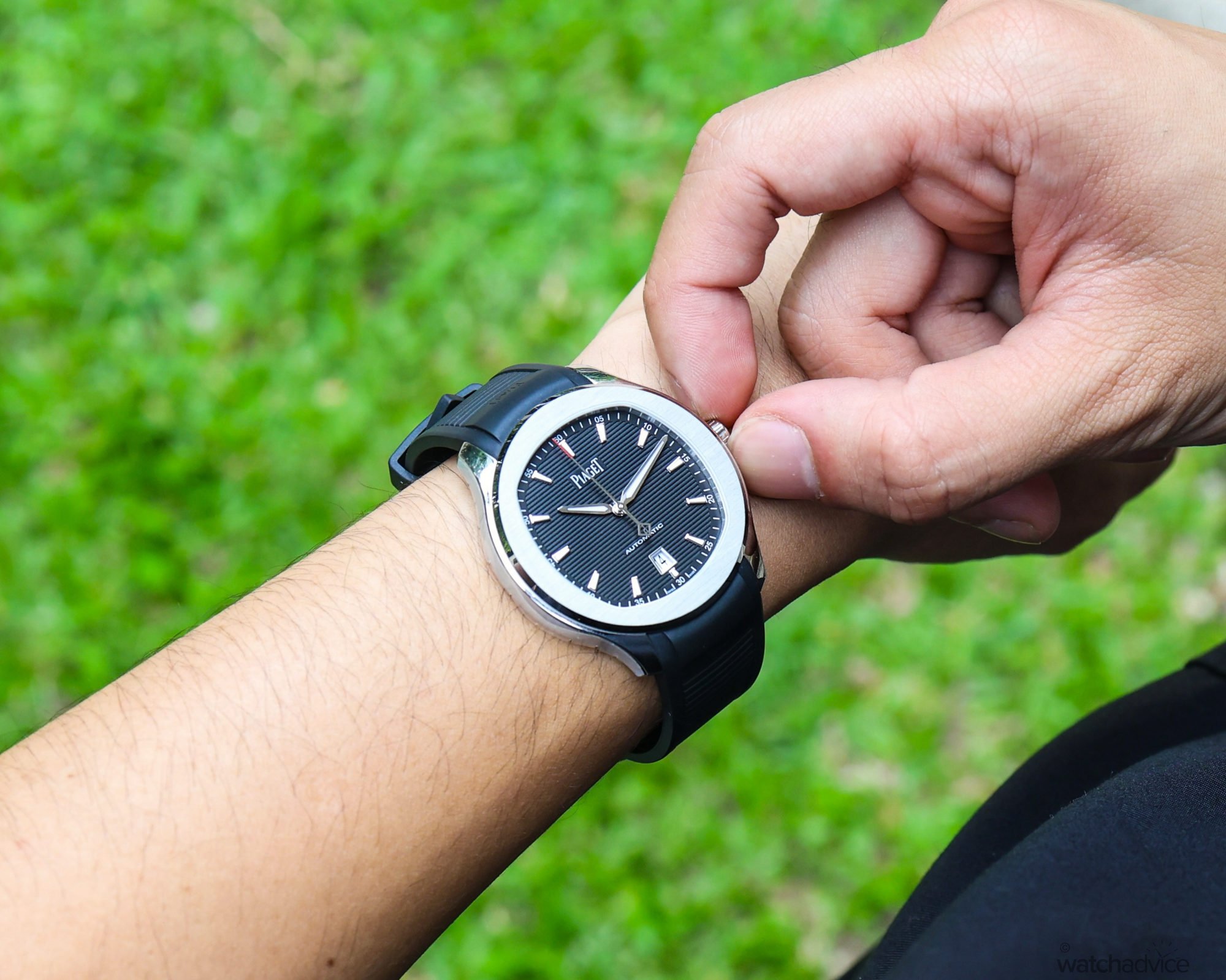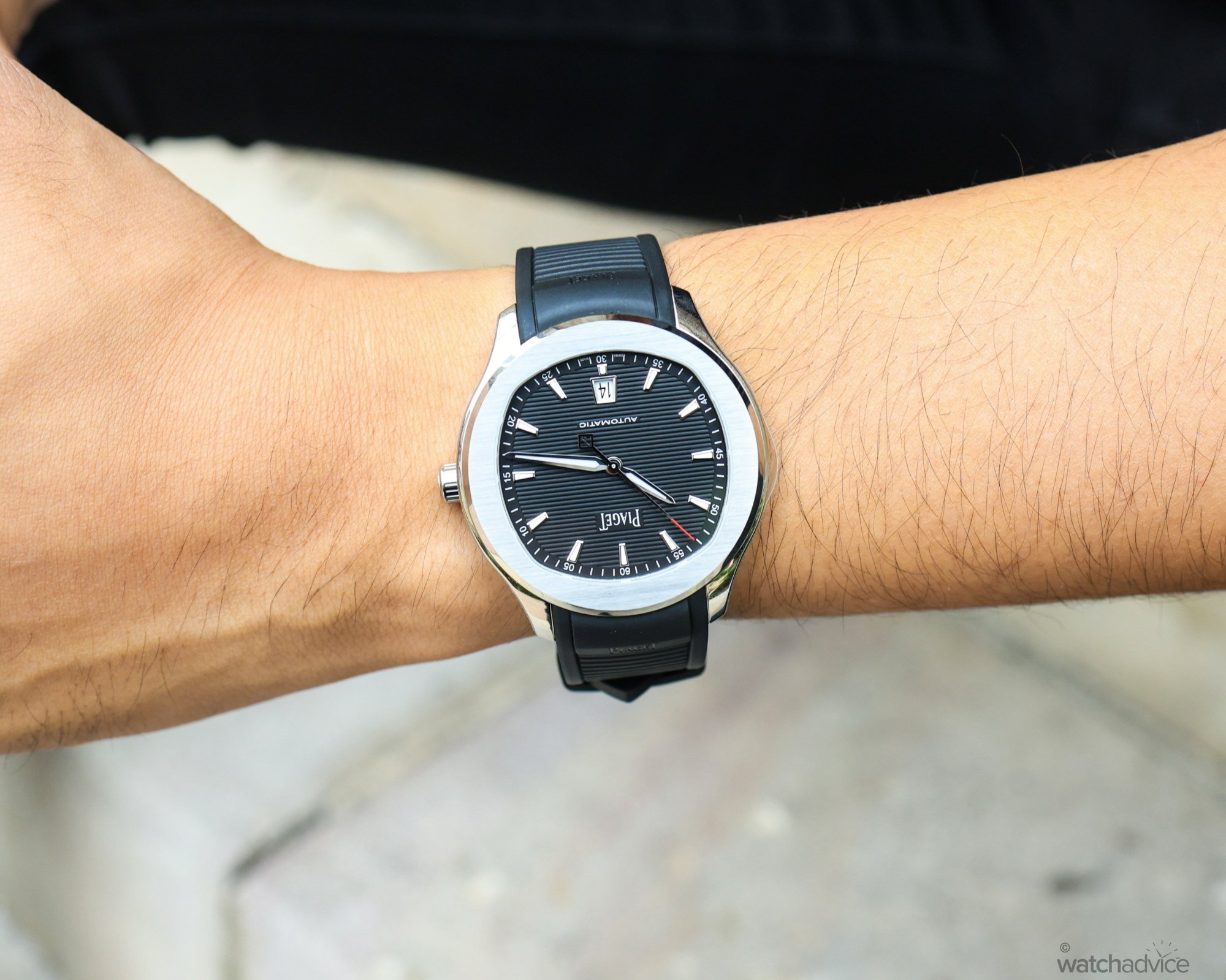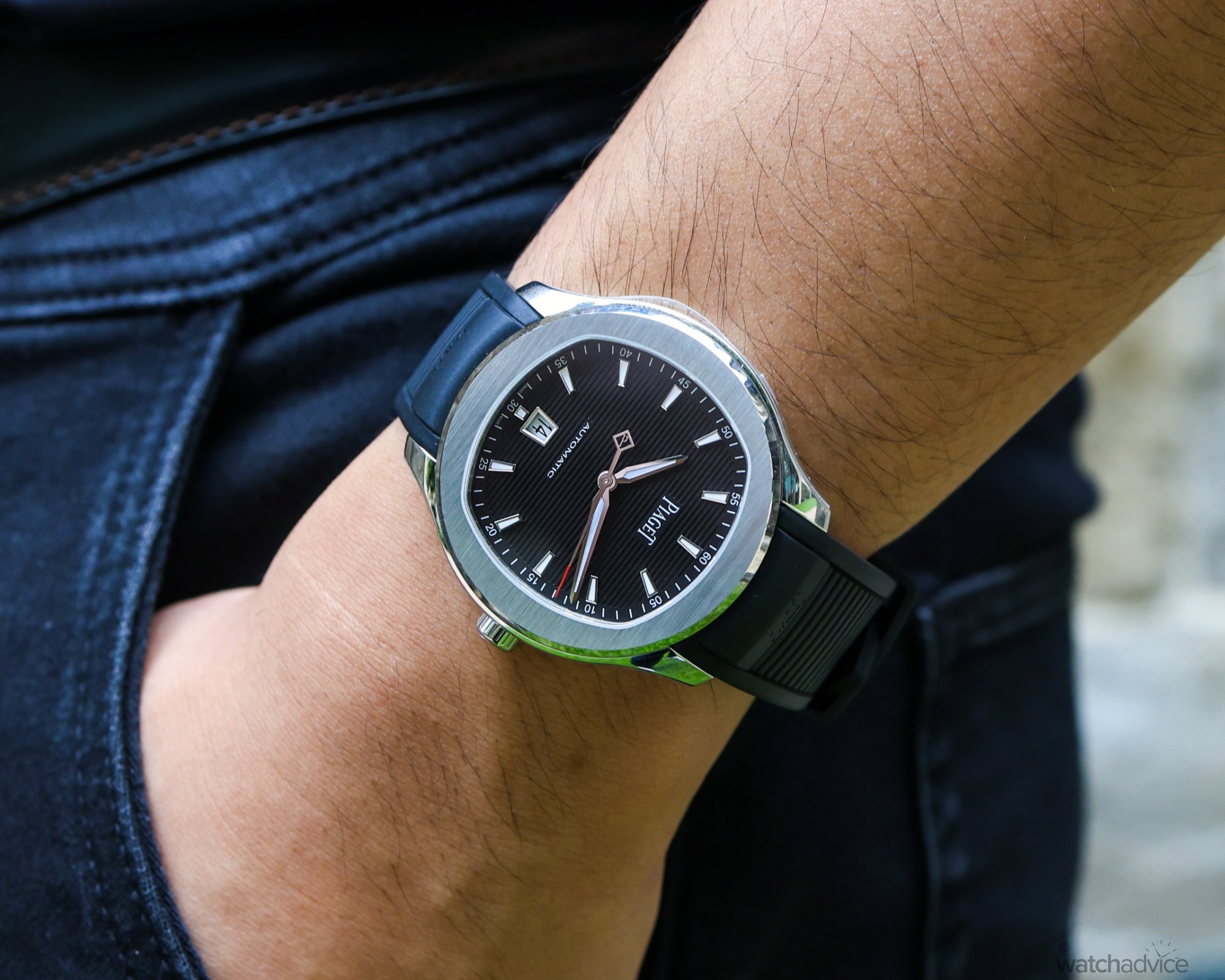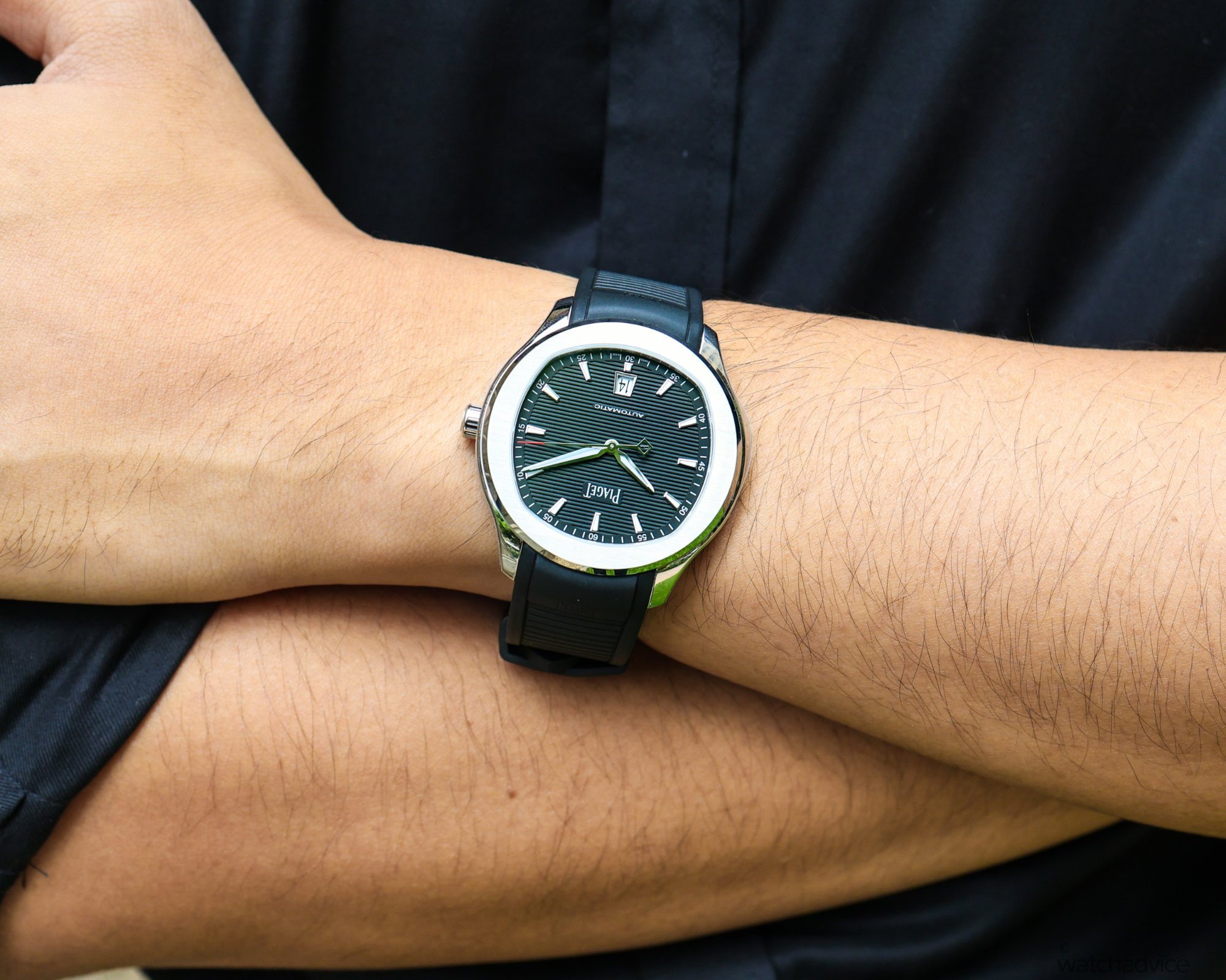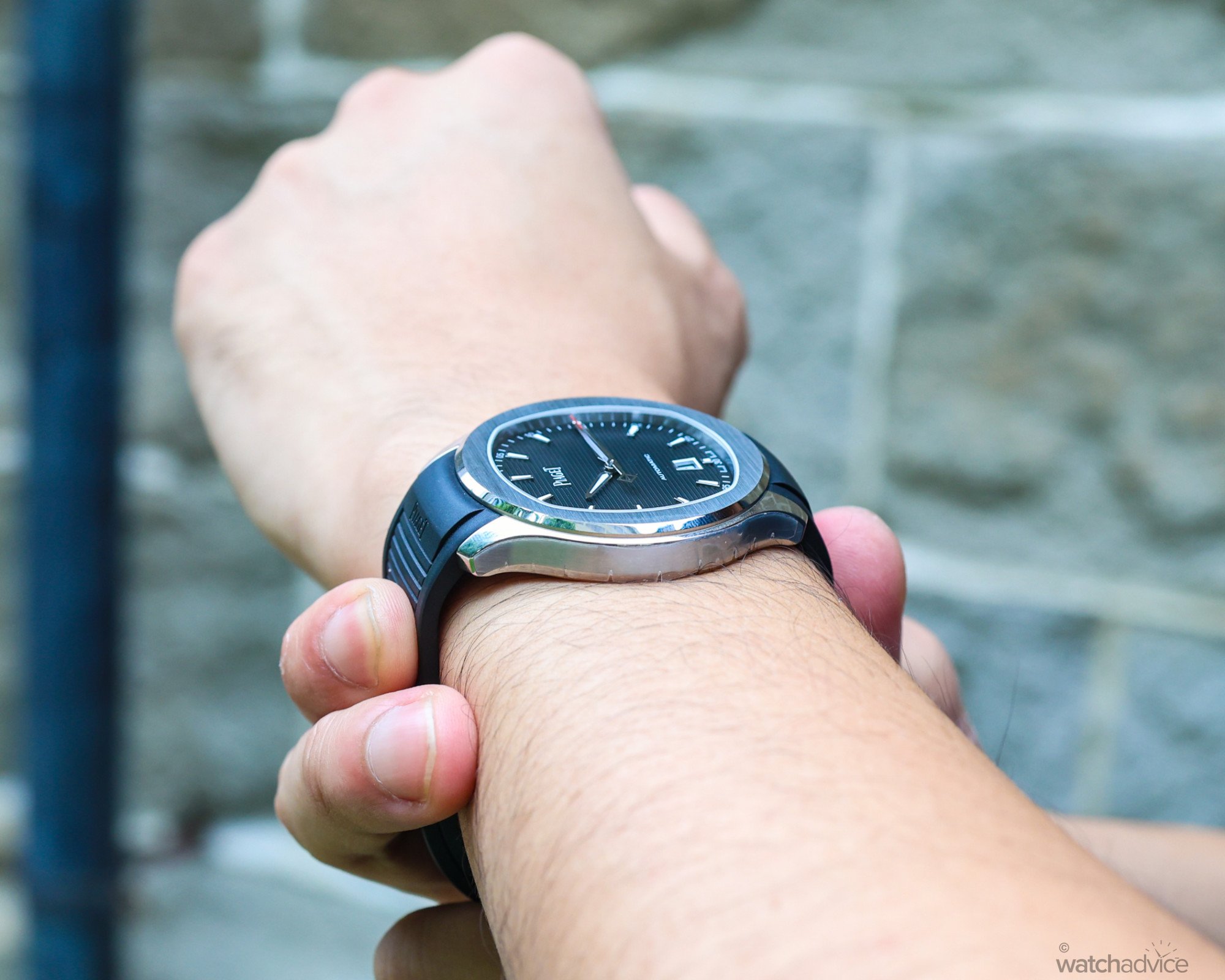In my latest review, I tackle a brand that deserves more appreciation than it currently gets. But does the watch warrant the price tag? Let’s find out
What We Love
- A ‘less is more’ design packed with fantastic detail
- Thin, wearable and versatile, even at 42mm
- Comfortable rubber strap
What We Don’t
- The price point isn’t outside of reality, but it’s still steep
- Significant dead zone on the crown when winding or time-setting
- Is the double-security clasp really necessary?
Overall Rating: 8.25/10
- Value for money: 8/10
- Wearability: 8/10
- Design: 8.5/10
- Build quality: 8.5/10
When I initially joined WatchAdvice, I met with Chamath and Matt over breakfast to discuss what the company was all about. From what I remember, an extract of that talk went about as follows:
Chamath: It would be awesome if you could write a review! Name a watch brand, and I’ll happily try to secure something for you to review!
Me: MB&F!
Chamath: Um… Try again, maybe?
To be honest, totally understandable. If I were in Chamath’s position, giving the new guy access to an MB&F LMP1 Evo from the jump is practically a death sentence – Leaving even the wrong piece of dust on one would probably end with me working for WatchAdvice in eternal ‘indentured servitude.’ So, I had to set my sights on more realistic opportunities.
Note: I said more realistic and not lower. Even without access to the extremes of haute horlogerie, I still had a whole host of amazing brands to choose from. After thinking long and hard about it, though, I decided to go with a brand that in my opinion deserves more love than it currently gets – Piaget.
A watchmaking dynasty that spans generations, Piaget became synonymous with beauty and elegance. From humble beginnings on Georges-Édouard Piaget’s family farm, they grew to be one of the most prolific jewellers and watchmakers of their time. This was most championed by fourth-generation family member Yves Piaget and the release of the original Piaget Polo in 1979 – a design as iconic as it was disruptive, taking inspiration from the ultra-thin watches created in the ‘50s and ‘60s by Yves’ predecessor Valentin. Although Piaget is now under the Richemont Group, having been acquired in 1988, they remain very well integrated within the watch industry.
Working alongside a star-studded supporting cast at Richemont has helped to uplift Piaget’s watchmaking capabilities. In 2022, this manifested with the Piaget Polo Date, a modern reinterpretation of the original reference and (somewhat confusingly) a ‘re-re-interpretation’ of the Polo S released years prior. However, the goal remained the same – to encapsulate the elegance and stylishness of the original Polo whilst introducing the iconic design to a new audience of savvy watch enthusiasts.
First Impressions
Having already worn the Piaget Polo series a handful of times at my local AD, my expectations had been somewhat realised even before I had gotten a hold of the watch to review. To be quite frank, before this review, I didn’t know much about the brand at all. My only exposure to Piaget was during late-night Instagram doomscrolling, where I happened upon a reel by Chad Alexander talking about Tom Holland’s watch collection.
But what I lacked in knowledge, I had enthusiasm – each time I got to try on the Piaget Polo Date at my AD, my love for the piece heightened. From what I had already seen in person, I knew I wanted the new Piaget Polo Field in green. Green is beginning to make a major comeback in the watch world, and the colour makes a statement without compromising on elegance. But since I was enamoured with the model in general, it didn’t matter to me what I got to review. So when the time came, I was equally as excited to see the black dial version as much as the green.
The Design
If you’re being introduced to the Piaget Polo Date, I’m sure you think that it doesn’t look like much – Simplistic, perhaps with a touch of retro cool. Yet, for a certain vocal minority in the watch community, to address this design is to make an immediate comparison to another: The Patek Philippe Nautilus. I’ve seen my fair share of scathing indictments of the Piaget Polo Date – “Horrible Nautilus clone,” “Piaget Nautilus,” and “Ugly & Boring AF” are just a handful of charming examples I’ve seen from the internet chatter surrounding it.
As unfair as it may seem, the comparisons have some validity – the original Polo and the Nautilus were both designed around the same period (‘70s), and both share a striking resemblance in both shape and finish. But even after this, I maintain that it stands on its own two feet. As my therapist once said, “Less is more,” and it’s in the fine details where the Polo Date truly separates itself from its inadvertent doppelganger.
At first glance, the Polo Date shares the same horizontal grooves as the Nautilus, but both differ greatly in the context of the overall design. Unlike the latter’s naval inspiration, the reasoning behind the Polo Date’s finishing is steeped in history. The dial’s finish pays its respect to the original ‘70s Polo. Comprised of unbroken horizontal finishing that even went across the dial of the watch, it was an iconic design, but perhaps too quirky for the average Joe. For Piaget to pay homage to the original whilst modifying it for the modern world is a nice touch, and is a testament to the level of detail apparent throughout.
What’s also cool is that the bezel of the Polo Date reinforces this with its horizontal brushing again paying tribute to the OG. At the risk of sounding a teeny bit pretentious, the theme of ‘continuation’ is rather apparent, both in the Polo Date’s design as well as Piaget’s own beliefs: To continue their reputation as established, high-quality watchmakers that pay tribute to their rich heritage. Practically, however, I’d suspect that scratches would be a lot more evident if they are against the grain – for a horizontally brushed bezel, it’s bound to happen a lot.
As expected of most black dial watches, the Polo Date didn’t have much play in the light. I would have loved to have seen either the sunburst green or the blue in action, but I think the black held its own just fine, allowing me to appreciate a lot of the finer details I may have missed otherwise. I adore how the horizontal grooves are cut out of the larger face by guilloché, with a clear white printed minute track running the dial’s periphery. Instead of the ‘70s Polo’s original dauphine hands, the Polo Date sports large lumed lance hands accompanied by a second hand with a signed, diamond-shaped counterbalance and a contrasting red tip.
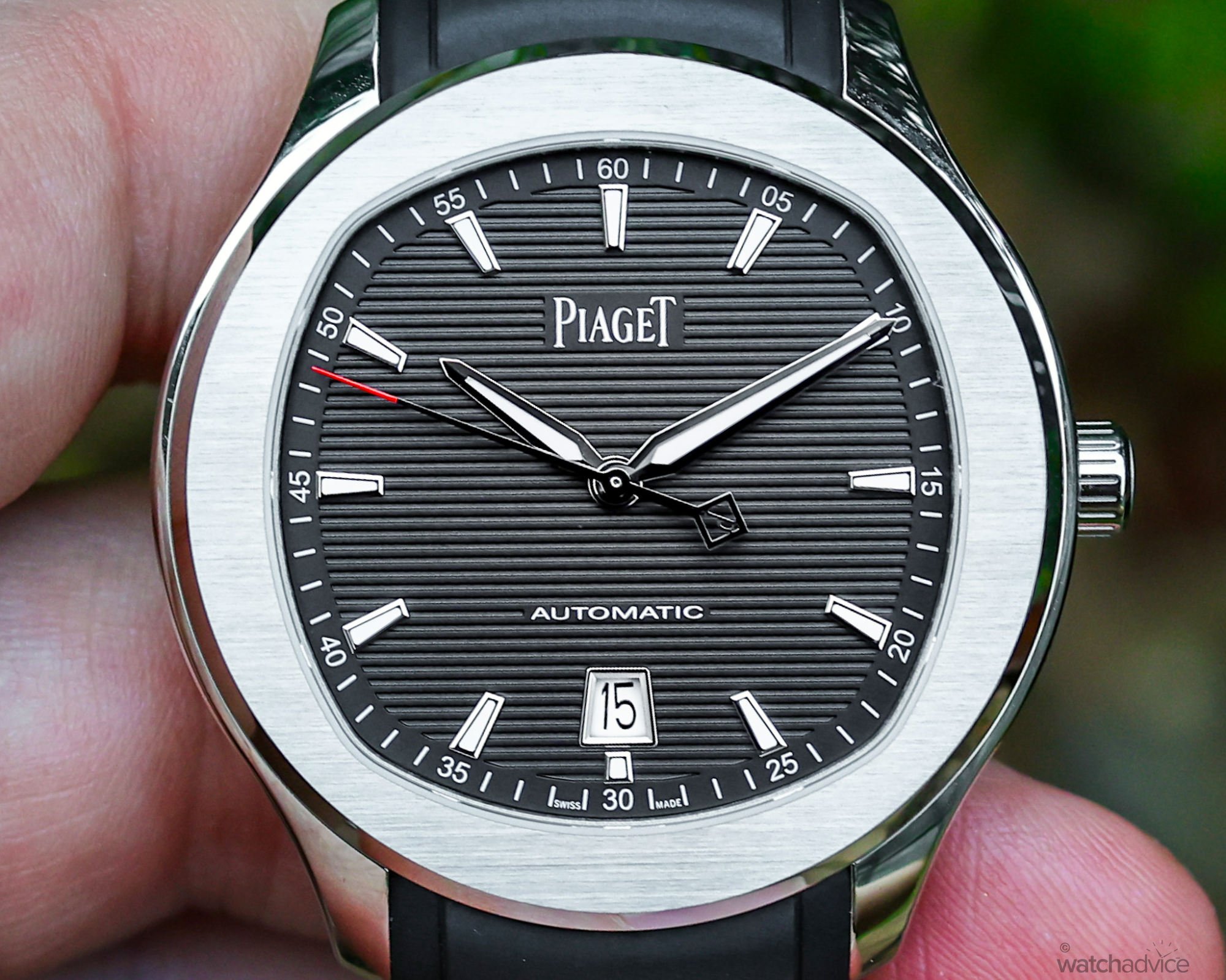
Another element of the design I enjoyed was the trapezoidal indexes, applied between the solid minute track and guilloché dial. While I didn’t get to see the lume capabilities for myself, I’m sure the generous dollops of lume evident on both the indices and the hands are more than capable of providing low-light visibility.
Again, though, the Devil is in the details, and one of my favourites is the date window. Almost all date windows on watches, at least to me, feel somewhat intrusive to the overall design. Being a sports watch, the Polo Date had to have one for practicality’s sake, but the integration feels almost serendipitous. The date window is the same trapezoidal shape used for the indexes, with the date text slanting slightly inwards to accommodate the unusual shape. Again, it feels consistent with both the timepiece and Piaget’s design philosophy behind the creation of the Polo Date, always leaving you with something else to look at each time you check it.
How It Wears
If you’re a Queenslander like us or live in tropical weather, you may understand how suffocating a watch can sometimes feel. When air has the same consistency as soup, you’re going to want something that is both comfortable and easy to adjust. For the Piaget Polo Date, the rubber strap is your best friend – soft to the touch and easily adjustable thanks to the ultra-secure butterfly/pin buckle combination clasp.
However, it’s a double-edged sword – I appreciate the security, but it does get a bit sticky to release and adjust, which can be a nightmare if you’re near anything that can damage the finish. It would be nice if Piaget offered a version of the strap on just the pin buckle, as I believe the sizing issue which I mention in this next part is large in part to that butterfly clasp.
On my 16cm/6.3” wrist, the watch fit – but only just, which is a personal bug of mine. The default strap and clasp that Piaget offers is probably best for those with a larger wrist size than I, as even on the smallest setting it felt a tad bit too big. Fortunately, Piaget seems to have it covered. On their website, they openly offer to tailor-make a strap to your liking – although it may be a touch pricey. If you are as challenged in the wrist as me, it’s something to keep an eye out for.
On paper, the Piaget Polo Date is 42mm in case diameter, but don’t let that fool you. Because of its relatively short lug-to-lug and astonishing 9.4mm thickness, the watch feels much smaller and lighter than its diameter suggests, making it an absolute joy to throw onto the wrist. If you too are of the smaller wrist, fear not! The Polo Date in 42mm should still suit you just fine! If you can get it to fit, that is. Looking at the below shot, you can see it fits well on the wrist, but the strap is a little loose.
Note that Piaget also offers a blue version of the Polo Date in a metal bracelet, though I do have my reservations. For one, the metal bracelet looks chunky on this otherwise elegant and sporty watch, and for some confusing reason, they opted to not include an easy removal system on the bracelet itself. So if it were me, I wouldn’t opt for this version.
The Movement
The movement that powers the Piaget Polo Date is the Piaget 1110P, visible through the see-through case back. I like how it looks – the case back is affixed by screws giving it an industrial and utilitarian feel, reinforced only by the finishing on the movement itself. The 1110P is finished with circular graining on the baseplate, blue-fired screws, and radial Côtes de Genève on the blackened and signed automatic rotor. At its core, though, is Cartier architecture. The Polo Date’s movement is based on the 1904-PS MC and sports a 4Hz (28,800vph) beat rate – for the layman, that means the watch ticks six times per second, an expected rate for most watch movements. The movement also comes with a 48-hour power reserve, although on Piaget’s official site, they state that it’s approx 50 hours.
Don’t get me wrong, I like this movement, Aesthetically and mechanically speaking. There’s not much that should set off any big red flags if you’re looking to snatch this one up. However, there is one gripe that I have – the RRP of AUD$20,000. While the price makes sense for a brand so steeped in horological and jewellery heritage, for the price point I was expecting something more.
Let’s put this in perspective: a Cartier Tank MC, a timepiece with the same specifications as the Piaget, currently costs AUD$12,400. So for the price of the Polo Date, you could buy the Tank MC and still have money left over for a Tudor Black Bay Ceramic. This is what perplexes me – why is Piaget asking for AUD$7600 more, even when taking brand equity into account?
What’s also a detractor is that the crown has a significant dead zone. I noticed this when I was both winding and setting the time on the watch, and it’s not something that I would have expected from a watch of this price. Although I was informed that a dead zone on the crown is an issue pervasive in many watch companies besides Piaget, I was still left at a loss. I’m certain that if I told another average person that my watch was worth twenty Gs, they would expect it to be near-perfect. For an issue like this to be referred to as “common” is disconcerting, especially for this price.
It would be remiss of me to just rag on Piaget for this, as movement sharing across watch conglomerates is not an uncommon thing, especially at Richemont. For example, the 1904-PS MC is also the basis for the Vacheron Constantin FiftySix’s movement, the Caliber 1326. But even then the FiftySix is only AUD$12,700 – AUD$300 above Cartier – and you get a 22k gold rotor to boot.
Final Thoughts
I’ll say this…My own biases meant that upon seeing it firsthand, I already knew that I loved this watch. But even from the outset, even without viewing it in person, There’s a lot to like. From the design to the movement, even how it feels on wrist, this newest offering from Piaget is everything you would expect a luxury sports watch to be. But at AUD$20,000, the value for money is wanting compared to others at this price bracket. While a Cartier base calibre is nothing to scoff at, I had hoped that even more of the technical excellence available at Piaget would be able to shine through on the inside and out.
However, even without an in-house manufacture movement, the Piaget Polo Date more than compensates for it. Whether it be the fantastic amount of self-referential detail in the design or their experience with ultra-thin watchmaking enhancing wearability, there isn’t a lot preventing a prospective watch buyer from slapping the Polo Date on their wrist and going about their day. Even though it’s a bit too big for me, most people wouldn’t find a problem wearing this one around, double security clasp or not.
At AUD $20,000 the Piaget Polo Date isn’t at the low end of the spectrum comparatively speaking. Whilst it’s not your standard sport or dress watch, there are other pieces with similar qualities, such as Glashütte Original which has a few retro and contemporary designs that could also scratch the itch, such as the AUD$21,200 Seventies Chronograph Panorama Date which blends the 70’s design philosophy with some modern aspects. Not to mention it’s a versatile sports watch with a similar vibe to the Piaget Polo date and could quite easily fit into that slot.
All-in-all, If I had the budget the Piaget Polo Date would certainly be on the list of timepieces to consider. Modern adaptations of the ‘70s era ‘TV Screen’ watch are few and far between, and watches that get them right are fewer still. Piaget manages to do both. Appealing to those who adore that era of watch design, but being self-referential enough to pay tribute to one of the most iconic watches of said era – one that they made at that. It’s an awesome piece that doesn’t quite know its place yet, but when it does, it’s bound to put the sports watch market on notice – that is if it hasn’t already!
Reference: G0A47014
Specifications
- Size: 42mm, 9.4mm thick
- Case: Polished and brushed finished stainless steel
- Dial: Gloss black Guilloché dial
- Hands/Indices: Trapezoidal lumed indexes with lumed lance hands (hour/minute), red-tipped seconds hand with diamond-shaped Piaget ‘P’ counterbalance
- Crystal: Scratch-resistant sapphire crystal, front & case back
- Water resistance: 100m (10BAR)
- Movement: Swiss-Made Automatic Piaget 1110P (Cartier 1904-PS MC Base)
- Power reserve: 48-50 hours
- Strap: Integrated black rubber strap with butterfly clasp/pin buckle adjustment with minder loop


